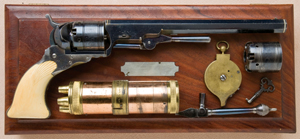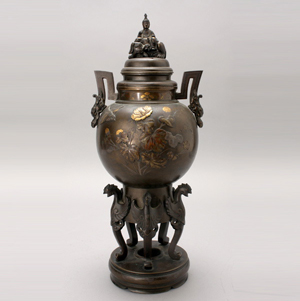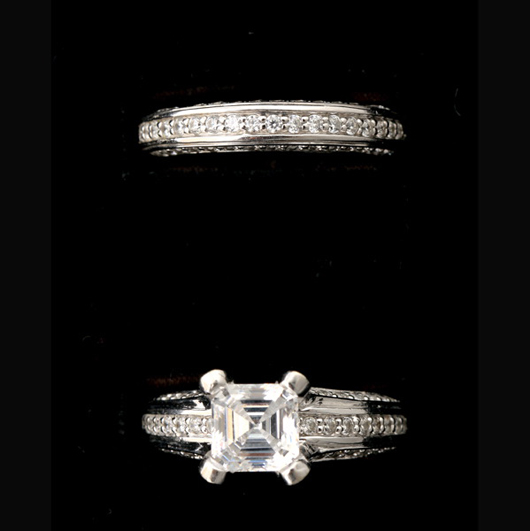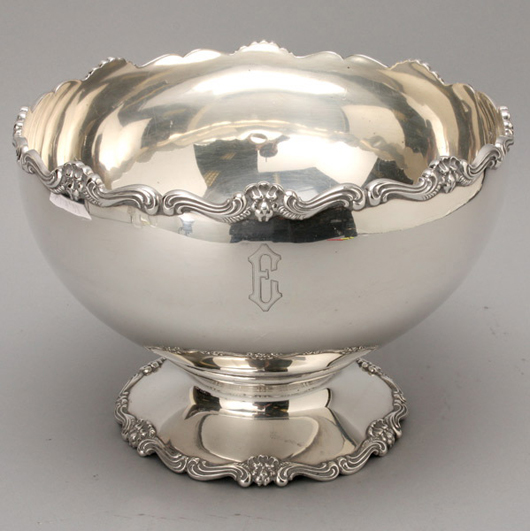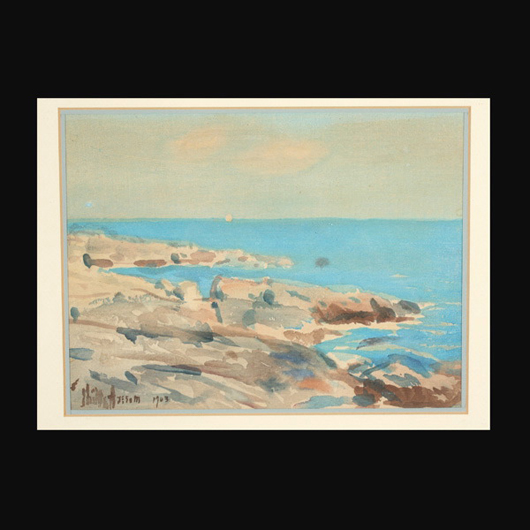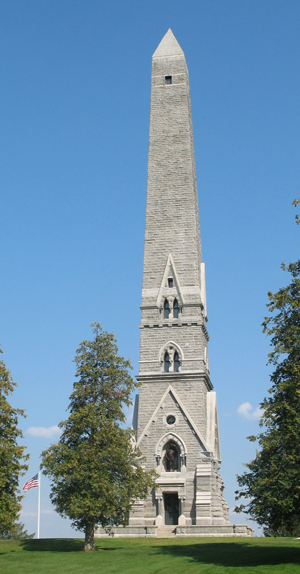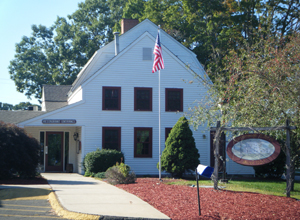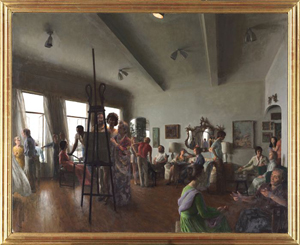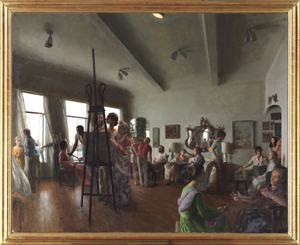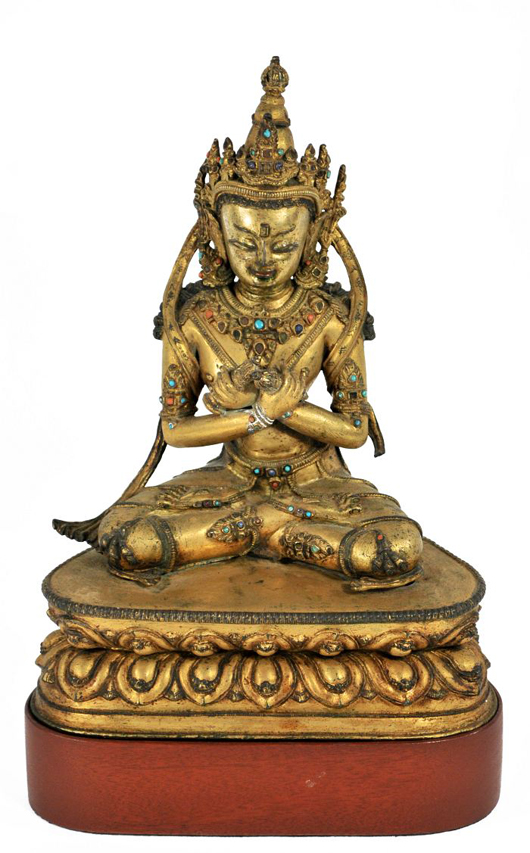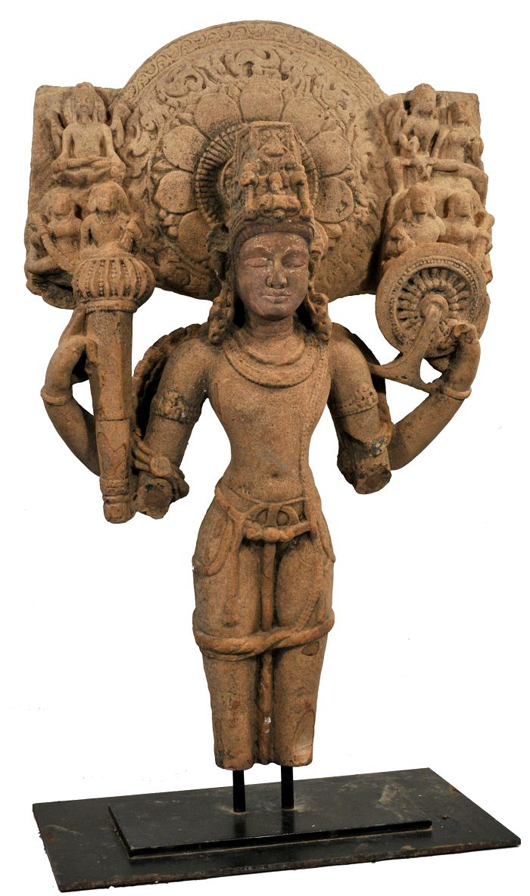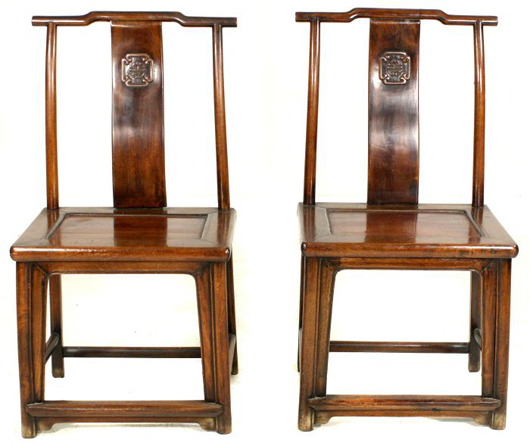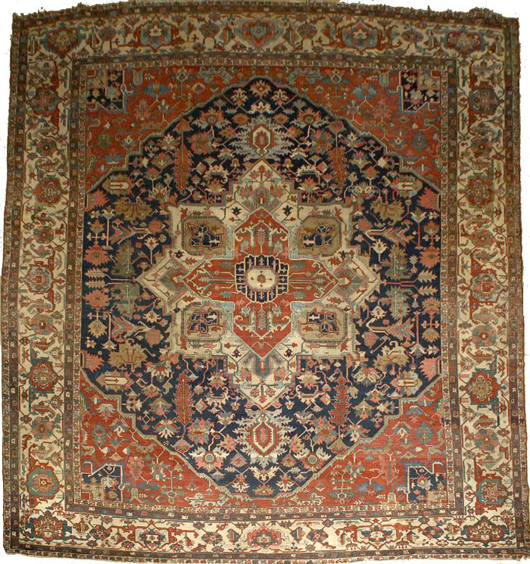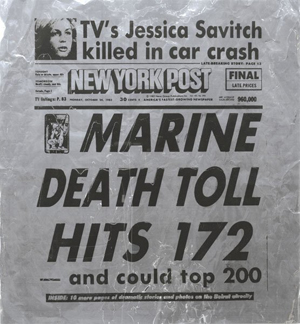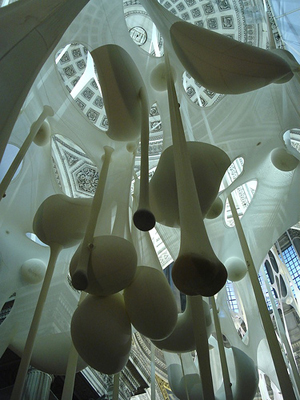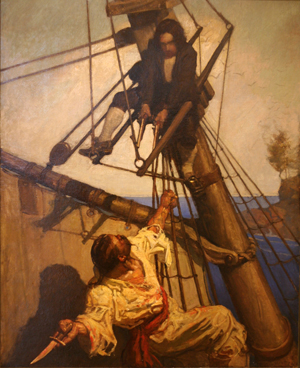
George V silver presentation trophy, ‘The Alexander Channel Cup,’ Birmingham, 1910, Elkington & Co., makers, inscribed, ‘The Alexander Channel Cup Presented To Henry F. Sullivan. Who Swam the English Channel, Aug. 5th & 6th 1923 …’ Estimate: $30,000-$50,000. Image courtesy of Skinner Inc. BOSTON – Skinner Inc. will conduct an auction of European Furniture and Decorative Arts on Oct. 14 and 15 at its Boston gallery. The sale kicks off on Friday at 4 p.m. Eastern with nearly 650 lots of fine silver. Saturday’s session II commences at 10 a.m. and includes Continental and British ceramics, glass, statuary, clocks, paintings and prints, lighting, rugs, textiles and antique furniture. LiveAuctioneers.com will provide Internet live biddings.
Fine silver highlights include a monumental and historic George V presentation trophy, “The Alexander Channel Cup,” presented to Henry F. Sullivan, a native of Lowell, Mass., and a celebrated endurance swimmer in the early 1900s. Sullivan was the first American to swim across the English Channel. This magnificent trophy is a masterpiece of silversmithing, and an historic relic of the golden era of adventure, exploration, and sporting first achievements. Lot 194 is estimated at $30,000 to $50,000.
Offered early in the sale and expected to induce heated bidding is lot 3, a yellow gold, cloisonné enamel, rock crystal bowl. The bowl Mughal, circa. 18th century, by Robert Phillips, is created in the archeological style and reflects the mid-19th century fascination with Greek and Roman antiquity. Phillips, known for his fine jeweled gold mountings on Mughal crystal bowls and archaeological-inspired jewelry exhibited at the 1867 Paris Exposition Universelle. It is likely that this bowl, with an auction value of $8,000 to $10,000, was exhibited there.
Fine silver offerings also include a diverse collection of more than 50 lots of Judaic Besamin box spice containers from European, Russian and Israeli manufacturers. Featured pieces include an Austrian filigree tower from 19th century Vienna, lot 31, estimated at $800 to $1,200; a Russian Art Nouveau tower from the first half 20th century, with an auction estimate of $600 to $800; and a modernist sterling container from the mid-20th century, lot 56A, and estimated at $1,200 to $1,500.
Finally, fine silver is highlighted by a Tiffany & Co. sterling center bowl with polar bear mask handles, lot 260, estimated at $6,000 to $8,000 and two lots by California silversmith Porter Blanchard: lot 406, a six piece Arts & Crafts tea and coffee service, estimated at $7,000 to $9,000 and lot 419A, a Modernist pitcher valued at $1,500 to $2,500.
Collections of note in Session II include an extensive grouping of English tea caddies, such as lot 1123, an ivory and green tortoiseshell harlequin tea caddy, circa 1800, estimated at $5,500 to 6,500, and lot 1129, a George III pagoda-top pressed tortoiseshell double tea caddy, circa 1810, estimated at $17,000 to $19,000. The sale also features a diverse collection of meerschaum pipes and cheroot holders, including lot 617, a large example with carved baseball players, with an auction estimate of $500 to $700.
Decorative Arts are featured by lot 1004, a grand tour micromosaic plaque, Italy, estimated at $5,000 to $7,000; lot 1017, an important mid-17th century English stumpwork Box, valued at $5,000 to $7,000; and lot 1061, a Meissen porcelain plaque, with an estimated value of $10,000 to $15,000.
Furniture highlights include a 19th century Dutch polychrome painted cupboard, lot 651, estimated at $6,000 to $8,000; lot 882, a pair of Napoleon III ebonized ormolu and Sevres-style porcelain-mounted twin beds, estimated at $12,000 to $18,000; and lot 1116, a late Jacobean carved walnut armchair, with an estimated auction value of $3,000 to $5,000.
Previews for the auction will be held on Thursday, Oct. 13, from noon to 8 p.m. and Friday, Oct. 14 from noon to 8 p.m. Illustrated catalog #2566B is available by mail for $35 ($42 for foreign requests) from the subscription department at 508-970-3240. It is also available at the gallery for $32. For details visit Skinners’ website www.skinnerinc.com or call 508-970-3000.
ADDITIONAL LOTS OF NOTE
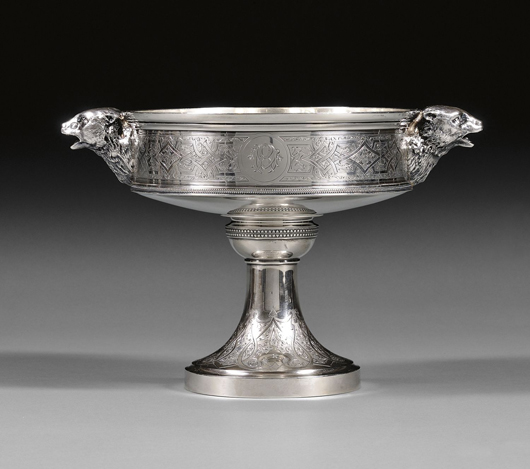
Tiffany & Co. sterling center bowl, 1865-70, set with handles formed as realistically modeled polar bear heads, 9 1/4 in inches, approximately 48.8 troy ounces. Estimate: $6,000-$8,000. Image courtesy of Skinner Inc. Estimate: $6,000-$8,000. Image courtesy of Skinner Inc.” title=”Dutch polychrome painted cupboard, 19th century and later, the molded pediment with panoramic scene of a stag hunt, 78 3/4 inches high, 53 inches wide, 20 1/2 deep. Estimate: $6,000-$8,000. Image courtesy of Skinner Inc.” class=”caption” width=”530″ height=”798″ /> Dutch polychrome painted cupboard, 19th century and later, the molded pediment with panoramic scene of a stag hunt, 78 3/4 inches high, 53 inches wide, 20 1/2 deep. Estimate: $6,000-$8,000. Image courtesy of Skinner Inc.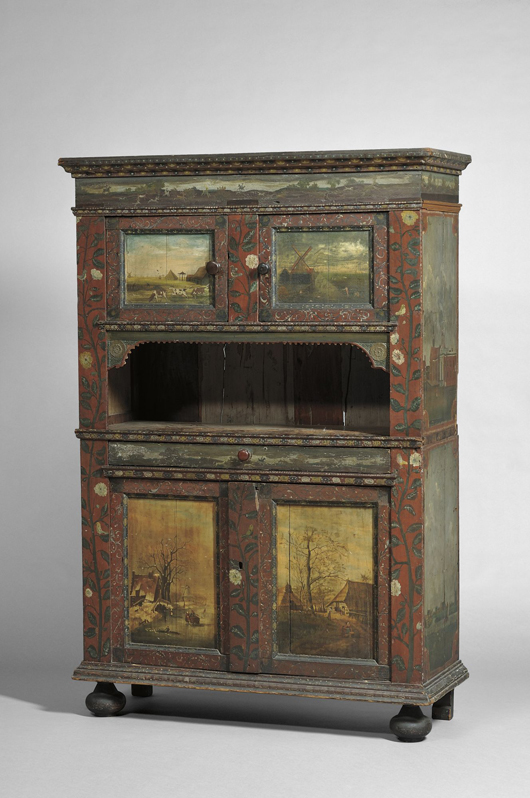
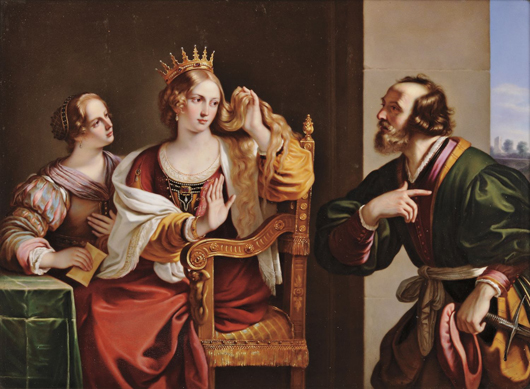
Meissen porcelain plaque, Germany, 19th century, rectangular form polychrome enamel decorated with a depiction of ‘Semiramis Called to Arms,’ underglaze blue crossed swords mark, approximately 13 x 17 1/2 inches, mounted in a giltwood frame. Estimate: $10,000-$15,000. Image courtesy of Skinner Inc.1058 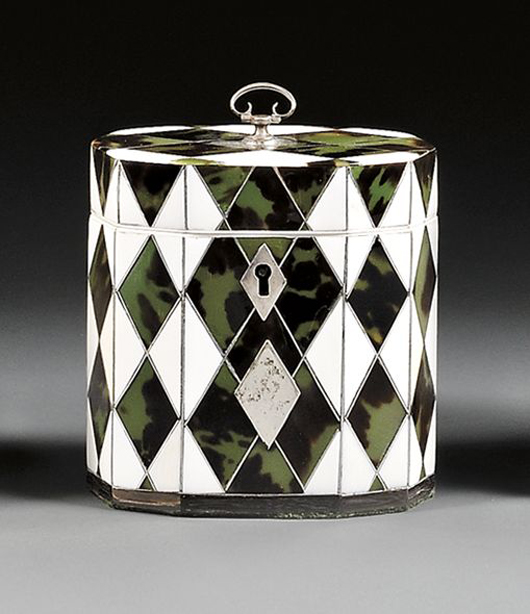
Ivory and green tortoiseshell harlequin tea caddy, England, circa 1800, decagon shape. Estimate: $5,500-$6,500. Image courtesy of Skinner Inc.



